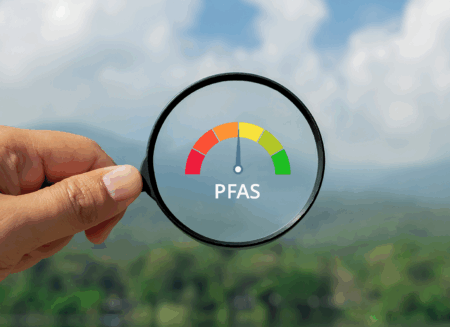We are expanding our previous discussion of PFAS in air in this and a subsequent blog.
As an exposure medium, indoor air could grow in importance as a PFAS exposure pathway. A recent research study indicates that indoor air exposure could account for small percentages of PFOA (13%), PFOS (3%), PFNA (7%), and PFHxS (25%) found in blood serum. These percentages may increase, however, as PFAS levels decrease in drinking water and food due to implementation of federal Maximum Contaminant Levels (MCLs) and reduced use in food packaging, respectively. Numerous indoor dust and vapor sources of PFAS have been identified, such as some carpets and textiles, personal care and cleaning products, and paints. Concerns are also shifting to PFAS such as fluorotelomer alcohols (FTOHs), perfluorooctane sulfonamides (FOSAs), and perfluorooctane sulfonamidoethanols (FOSEs). USEPA indicates that these nonpolar compounds may in some instances even be present as the result of vapor intrusion, as they are more volatile than other PFAS, and have been measured at varying concentrations in indoor air. More research is needed to study toxicity data, indoor sources, and fate and transport of FTOHs, FOSAs, and FOSEs. For example, there is some evidence of conversion of these chemicals to stable perfluorinated compounds (e.g., PFOA has been observed to increase in animal serum from exposure to 8:2-FTOH).
How much exposure to PFOA results from PFAS in indoor air? For perspective, in comments submitted to ATSDR in 2018, we estimated a typical PFOA background exposure of 14 ng/day for a 70 kg adult, based on a published half-life and a decreasing PFOA trend in blood serum. Reported median PFOA concentrations in indoor air range from 0.02 to 0.05 ng/m3, corresponding to exposure of 1.4 to 3.5 ng/d at a 20 m3/d respiration rate, which only represents 10-25% of the above estimated typical PFOA background exposure. The contribution of FTOHs to PFOA exposure is more difficult to estimate. Measured concentrations vary substantially based on the presence or absence of sources. 8:2-FTOH concentrations of the order of 100 ng/m3 have been measured in settings such as schools and outdoor clothing stores. However, animals appear to convert only a small amount of inhaled 8:2-FTOH to PFOA. A conversion rate of 0.1% (observed in animal studies), along with the parameters above, implies potential PFOA exposure of 7 ng/day, which is half of our background exposure estimate. Recognizing that these simple calculations involve considerably broad assumptions and uncertainties, they do suggest the inhalation pathway may merit future investigation and/or become a focal point for regulatory agencies.
Research is suggesting indoor air as a potentially important exposure pathway warranting more evaluation. However, attention is also growing on PFAS emissions to outdoor air, which will serve as the subject of our next blog.





